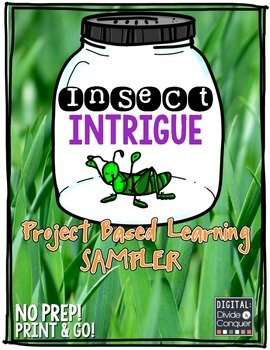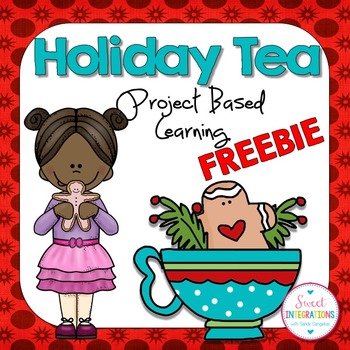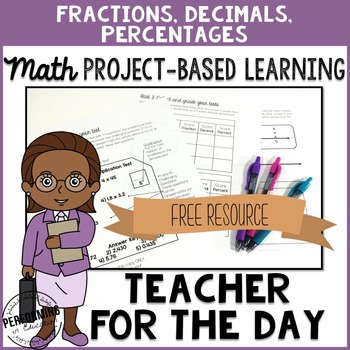We often talk about how a one-size-fits-all curriculum just doesn't work in education, but today I'm hear to share with you that one instructional practice. Project Based Learning, or PBL, IS good for one learner, but it's also good for ALL learners.

2
Recently, I was able to hear Nell Duke, a leading researcher in the area of reading, speak on the topic of engagement. We know that engagement is more important than ever with the increased demands our standards bring, and we know what happens when you give challenging work to students who aren't interested in doing it, right? ONE ANSWER...Project Based Learning.
Duke says, "If you care about kids' interests, skills, and background knowledge, you'll get better comprehension results." She cited Jerry Brophy's study on ways teachers motivate kids. According to his study, teachers should:
Model interest in learning
Induce curiosity and suspense
Make abstract concepts concrete through demo lessons
Make the lesson objective clear to the learner
Provide informative feedback
Adapt tasks to interests
Give choice for tasks
How does Project Based Learning mesh with these? Why does Duke feel PBL is the way to go? Well, she began by describing a PBL experience that was done with 3rd grade students. The teacher introduced the idea with a read aloud about pesky animals such as earthworms, spiders, bats, and snakes in the book, Animals Nobody Loves by Seymore Simon. (Would this build curiosity and suspense? Yes.)
Then, the students selected animals that they wanted to research further. (Would this be adapted to student interest? Yes.) Once the research part was complete, the students were asked to persuade others to LOVE the pesky animal and create a project that demonstrated WHY they should. (Would this task allow choice? Yes.) (Will students get immediate feedback? Yes.) Doesn't this sound like fun? As she described this project, I thought about how excited my students would be doing a project like this. The most interesting point she made though was that this was offered to ALL students in a low SES school. The results were very, very positive, and here is why.
Project Based Learning...
takes an extended period of time
achieves a purpose beyond school requirements
uses different learning styles (building, creating, answer deep questions)
is interdisciplinary
offers choice and voice
integrates reading and writing
taps into student interests, beliefs, and attitudes
is linked to standards (research strand is ideal)
gives students purpose for reading
AND allows students to reach a NEW audience
We know when students have a deep desire to read challenging texts, motivation will help them push through to complete it. We also know that reading multiple texts on the same topic deepens understanding of the content as well as related vocabulary too, so there is certainly research to support using PBL with ALL students.
How to Get Started
To prepare for this post, I reached out to my blogging friends to find additional blog posts and resources that teachers could use. First, I'll share posts for additional reading. If you are just getting started, you are sure to have lots of questions. These posts will hopefully take care of those and help you see a few more PBL examples.
This post is from Matt at Digital Divide and Conquer, and if you visit Matt's blog, you'll find a plethora of resources as well as informational posts on PBL I liked this post for explaining step by step how to dig into it. It's a MUST read, and his PBL units have been recommended by several who have used them.
This post from Performing in Education explains what PBL is, how it looks for teachers and students, what the process is, and (lucky you), it includes a sample resource.
Cyndie at Chalk One Up for the Teacher has jumped into the PBL pond, and explained a PBL experience she had with her students. I just loved this example, and I know my students would love it too. This one is a great example of PBL in the primary grades. Cyndie's students began with reading books in The Magic Treehouse series, and these books led to "inquiring minds". Having a leading question is important because it drives the exploration. Be sure to check this out if you're teaching grades 1-3.
Finally, I had to share this project from my friend, Sandy at Sweet Integrations. She has quite a few PBL sets in her store, and this post on her blog really caught my attention because we've read about the Iditarod with my fifth grade groups. The kids read Stone Fox in early fourth grade, so they had a little schema for dogsled racing. I had also used the book, Dogteam by Gary Paulsen for descriptive writing, and we had read a Close Reading article about the Iditarod too. Sandy's project would have been so perfect for them. (another year I guess) Anyway, she offers great ideas in her post about it if you think your students would be interested in learning more.
Free Sets to Get Started
Now, doesn't this sound like fun? Remember, Project Based Learning is not just a teaching idea for your Talented and Gifted students. Project Based Learning is a great technique for ALL.
Have a great day, and I'll see you next month.















